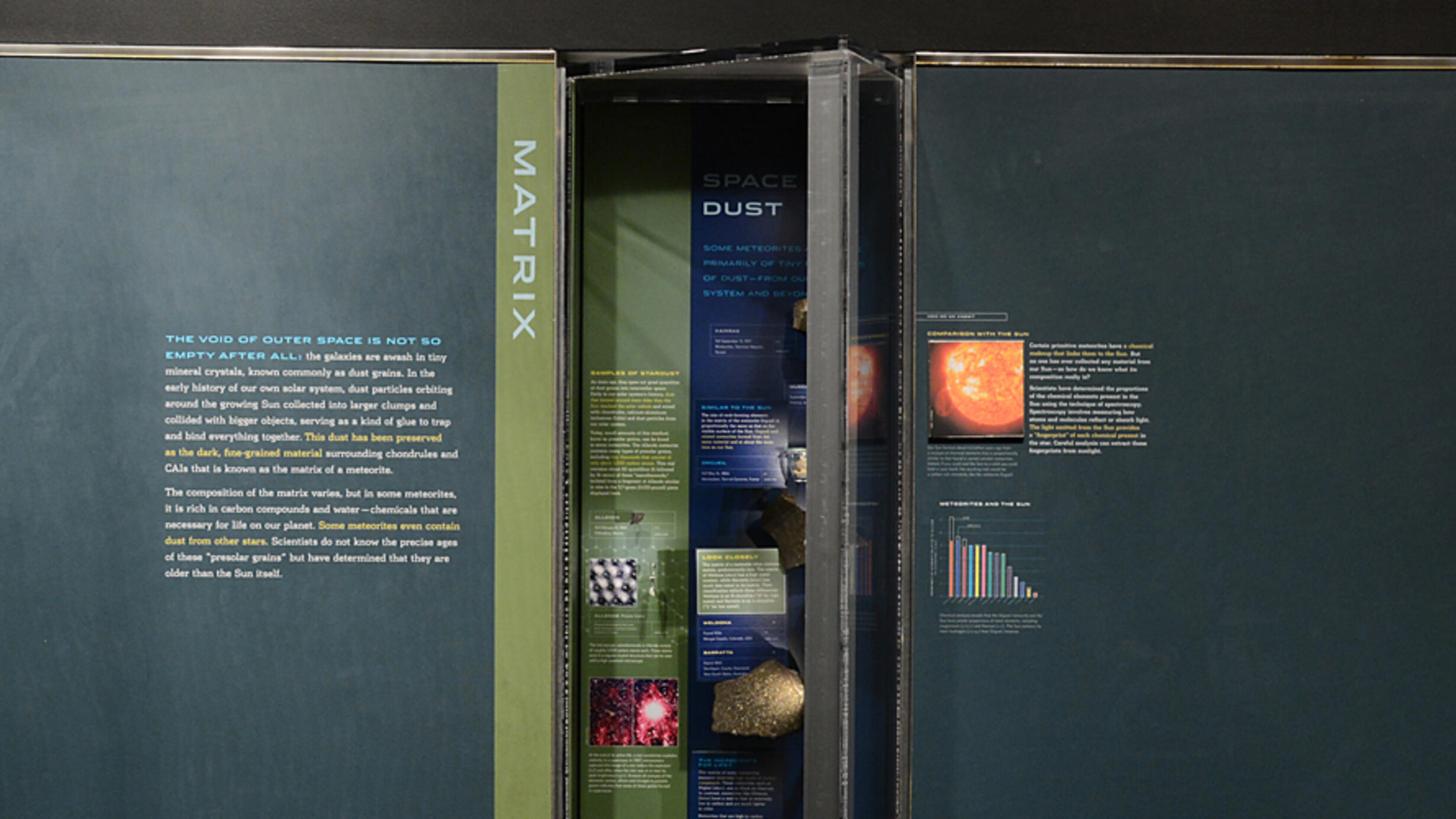Matrix
Part of Hall of Meteorites.

The void of outer space is not so empty after all: the galaxies are awash in tiny mineral crystals, known commonly as dust grains. In the early history of our own solar system, dust particles orbiting around the growing Sun collected into larger clumps and collided with bigger objects, serving as a kind of glue to trap and bind everything together. This dust has been preserved as the dark, fine-grained material surrounding chondrules and CAIs that is known as the matrix of a meteorite.
The composition of the matrix varies, but in some meteorites, it is rich in carbon compounds and water—chemicals that are necessary for life on our planet. Some meteorites even contain dust from other stars. Scientists do not know the precise ages of these "presolar grains" but have determined that they are older than the Sun itself.
How do we know: Comparison with the Sun
Certain primitive meteorites have a chemical makeup that links them to the Sun. But no one has ever collected any material from our Sun—so how do we know what its composition really is?
Scientists have determined the proportions of the chemical elements present in the Sun using the technique of spectroscopy. Spectroscopy involves measuring how atoms and molecules reflect or absorb light. The light emitted from the Sun provides a "fingerprint" of each chemical present in the star. Careful analysis can extract these fingerprints from sunlight.